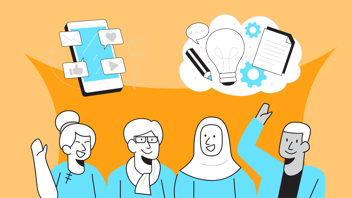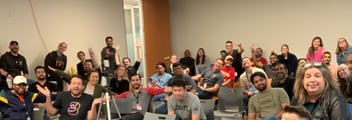
Change. Everyone wants it. No one wants to do it. In companies, change is truly the only constant. New technology. New teams. New leaders. New offices. New economic realities. Everyone seems to conceptually understand that change is a part of life. That is, until change is not a choice or convenient. But why?
Humans are funny creatures. We tell our kids and employees to embrace change. Grow from it. Learn within it. Seek the opportunities after it. Appreciate it. But if change hits us, this advice is out the window. We’re back in the fray of emotions that governs our mindsets, attitudes, and behavior. We ignore reason, look for the negatives, and dig our heels in. Let me tell on myself. I work for a technology-forward company, Softway.
We build great products for large enterprises. We migrate to cloud like the best of them. And I see the value we create each and every day. But then new technology gets introduced into my process and way of life, and I freeze. The thought of having to carve out time to learn a new system. Do things differently. Become slow. Be dumb this late in my career. These feelings are paralyzing, annoying and embarrassing. Don’t be like me. (Though I feel you may feel like this in some areas of your “change” life, maybe not technology).
It’s this reality that helps me to look at change management differently within organizations, including my own. These are the feelings that are behind resistance. These are the least admitted things change leaders and agents either don’t know or fail to address. Kotter and ProSci created great constructs for change, but good change is people-led, not process-led. People leading change sometimes adhere to process and checklists to ensure “they do it right.” But my experience has shown that doing it right doesn’t equate to the right things being done.
Not for the humans who have feelings that are not being addressed. Showing me what tomorrow looks like isn’t motivating if the short-term has me looking foolish (in my head, at least). My leaders decided this for me and aren’t even participating in this effort. I can’t ask questions because they either don’t know or will feel challenged. The WIIFM (what’s in it for me) spiel is really doctored business gains to save or earn money. I won’t be getting a raise or gold star after this change is complete. I’ll just be greeted with even more change. Yay!
Change starts to look bleak when you fold the human condition into it, which is likely why so many change management initiatives stay on the surface. A professional and acceptable veneer. But, we’ve found that addressing these feelings and allowing people to vocalize them actually can inform the process and lead to better content, engagement, and outcomes. I worked with a large enterprise IT team that had more change initiatives than they could complete.
I was assigned alongside technical and creative peers from Softway to support the largest change at the time (digital transformation). With all of the tech talk, humans were being left out. We pivoted communication to be more human interest. We created platforms to share videos of leaders opening up about their mistakes, fears, and natures. We wrote articles and embedded GIFs (a modern internet language that was unheard of within their corporate boundaries) that showed the struggles teams were having to find, build, and deploy tech that was for the reader. We created live events that felt more like Who’s Line is It Anyway? than talking heads in a town hall. We became storytellers, not change consultants. These pivots got people excited. Engaged. Interested. And curious.
Curiosity can be the biggest change agent if you know how to build content that addresses the feelings and gives people more to discuss, research, and figure out how they can participate. In looking back to the change I readily accepted, I realized that curiosity drove most of that willingness. I took to new technologies well when I was curious about them. I naturally adopted change as I understood the human side of it. Who built it. Who they built it for. Why they felt the need to build it. What had I missed in my own happenings that would make me look stupid if I didn’t change.
From iPhone to Google Drive, I had examples of self-driven change that were opposite to what I might see within work. No feelings of embarrassment or stupidity. But, my curiosity was stirred when content and conversation around change felt balanced, insightful, and real. Also, when things tapped into emotions, especially with humor and levity, as well as my curious nature, I let my guard down. I embraced the inevitable. And I would sometimes help others along the way.
Here are my quick tips on human-centric change management:
- Address the underlying feelings. Chances are the only people excited about change initially are the ones who decided to do it in the first place.
- Get good with your content. Presentations and articles can get dull if everything is written like a user manual or without imagination.
- Show the human side to leaders of the change. Vulnerability is persuasive. It’s also inviting. Get your leaders into the change in ways that make them more approachable and fun.
- Tell a story, not a templated process. Focus on giving people insights and perspective as things are being found, built, and deployed. Give them a reason to care beyond how the business will benefit. Everyone knows that’s the case already.
- Admit failures and pivots. The journey to change is just as compelling as what gets implemented. It also helps those of us who are perfectionists see that not everything has to be perfect or go according to plan in order to be successful and worth it.
There you have it. These are easier said than done, for sure. It still takes imagination and creativity to pull change off successfully. That creative talent can be hired if you don’t have that capability or comfort internally. Regardless, the need to change change is something every organization will soon realize. It’s possible though. You just need to think about and approach it differently. When it comes to your transformation journeys and change initiatives, how are you awakening the curiosity of your teams?




